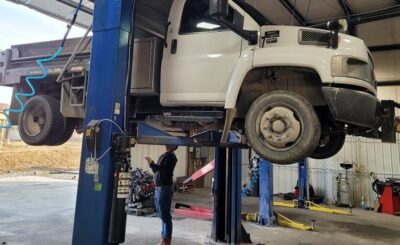When your vehicle has had significant repairs, switching to a new maintenance plan may be nerve-wracking, but it is essential for the longevity of your vehicle. Modifications to your schedule are required following large repairs or the replacement of parts, and they have the potential to improve the health of your vehicle. Easy strategies for dealing with this shift are provided in this guide.
Evaluate Fixed Items
You must comprehend your car’s repairs to change your maintenance strategy. Ask your technician or repair company, such as Auto Services in Sardinia, OH, if the repairs affected systems or components. If you replace an engine, know the break-in period. Note related components like filters or fluids that may require a change in maintenance frequency. Having the details lets you develop a personalized maintenance program.
Look For Manufacturer Suggestions
A manufacturer’s maintenance schedule comes with every car and sets performance standards. Check this timetable after substantial repairs. Watch for inspections, tire rotations, oil changes, and filter replacements. Repair advice often changes depending on the parts utilized or automobile age. Following the manufacturer’s instructions will prevent early wear and tear and prevent stress on newly installed components.
Modify Timetable
The new maintenance schedule should be developed after the repairs and the recommendations from the manufacturer have been evaluated. At regular intervals, you should change the oil, inspect the brakes, and rotate the tires. Following significant repairs, you could feel the need for additional check-ups in the near future. In particular, this is of the utmost importance for essential systems such as the cooling system or the brakes, which may have been subjected to stress during the repair process.
Consider Component Break-in Times
Consider the break-in times of newly installed or repaired components. Engines and parts often require special care after installation. This may require more frequent checks to ensure everything is working smoothly for the first several hundred miles. After this initial break-in phase, you can reduce inspection frequency, but keep a look out for odd noises or performance issues.
Consider Environmental Impact
Consider your driving environment when adjusting to your new maintenance schedule. If you drive in harsh weather, off-road, or stop-and-go traffic, you may need to adjust your maintenance plan. In these difficult conditions, more frequent checks or earlier fluid and filter replacement may be necessary. Considering your driving style and environmental factors will help you create a more personalised and effective maintenance programme.
Conclusion
Finally, after substantial repairs, consistency is key to car maintenance. Keep track of every maintenance task you do, including dates and details. Keeping an organized record lets you track the car’s performance and your new routine. A detailed maintenance history will also aid selling or warranty negotiations. Following these tips and being cautious will help your car last for years.








